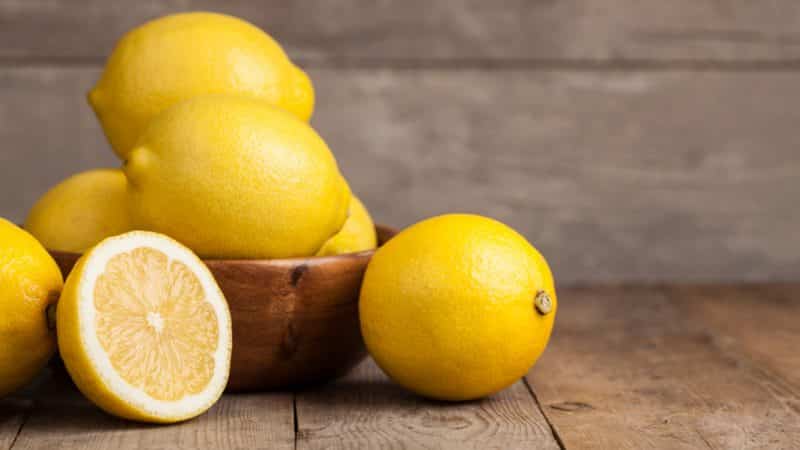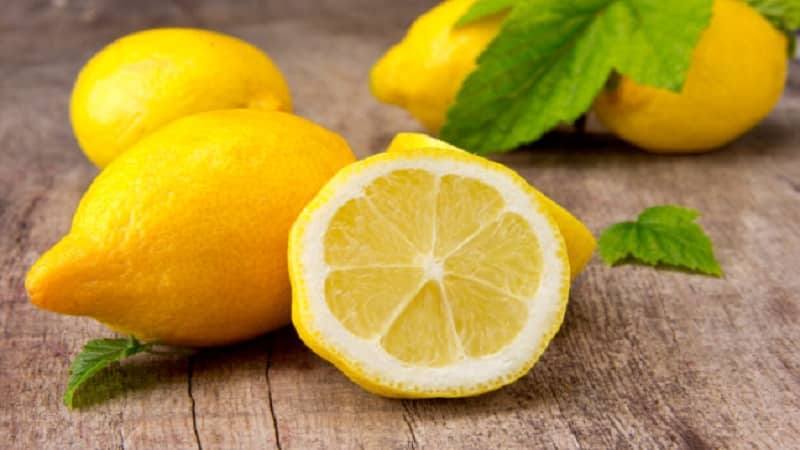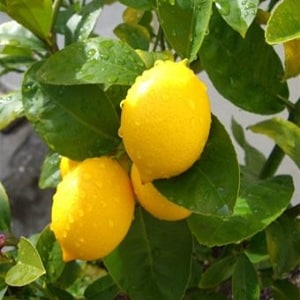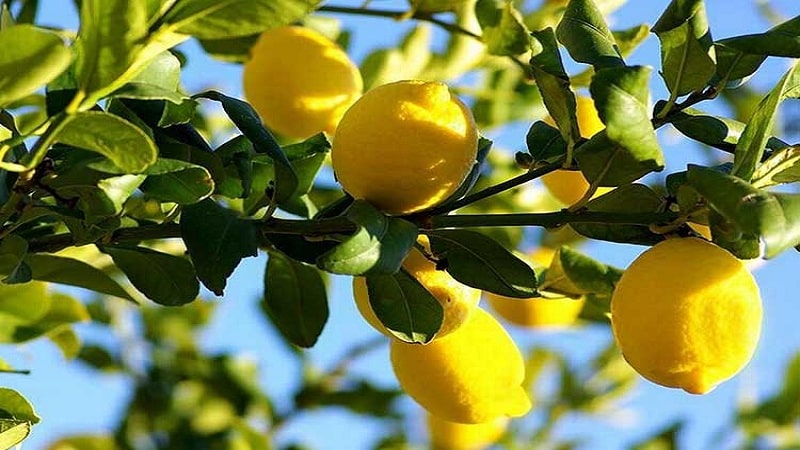All about lemon - is it a vegetable, berry or fruit?
The word “lemon” refers to both lemon trees and their fruits. This is a representative of Citrus, originally from India. Bright yellow fruits with sour pulp are valued all over the world due to their high content of vitamin C, essential oil, potassium, calcium and magnesium. D-limonene is responsible for the recognizable citrus aroma and taste. In this article we will tell you everything about lemon: its origin, distribution, botanical characteristics and chemical composition.
What is lemon

Lemon (lat. Citrus limon) is the name of a fruit tree of the Citrus genus, the Rutacea family, and its fruits.
The name "lemon" comes from the Malay word "lemo". In India, the fruits of the lemon tree are called "neem", and in China - "limung".
The homeland of lemon is India and the tropical islands of the Pacific Ocean. Botanists suggest that this is a hybrid of citron and bitter orange, resulting from cross-pollination of the two crops.
The first mention of it appeared 2 thousand years BC. e. in historical documents of India and Pakistan. In the 12th century. lemon appeared in the Middle East and North Africa thanks to Arab merchants. The crusaders brought lemon to Spain and Italy.
Reference. Mexico and India are the leaders in lemon harvesting. The annual turnover is 14 million tons or 32% of the world harvest.
The exact time of the appearance of lemon in Russia is unknown. One version says that the first tree was brought by eastern merchants. Mentions of the plant were found in a monument of Russian literature of the 16th century. - a book called “Domostroy”.It describes tips for storing lemons and consumption. Apparently, by this time the fruits of the lemon tree had already lost their status as an overseas curiosity.
Some historians are sure that Peter I brought lemons to the territory of modern Russia after visiting Holland. The first 200 seedlings were delivered by Admiral Apraksin in 1708 by order of the Tsar. In 1714, lemon trees began to be grown in a specially equipped greenhouse. It was a huge structure with several rooms and was called Oranienbaum, which translated from German means “orange tree.” In Moscow, lemons were grown in “greenhouse chambers” at the Kremlin.
Gradually growing fashion citrus fruit spread among landowners and nobles. At that time, this occupation was considered prestigious.
In the middle of the 19th century. the famous folk variety of lemon Pavlovsky appeared, named after the city of Pavlovo, Nizhny Novgorod region. It was here that this indoor variety appeared thanks to the merchant Karachistov. Returning from Istanbul, he brought with him a couple of lemon seedlings, donated by Turkish merchants. In his hometown, Karachistov gave them to his relative Elagin, who began breeding them at home.
It was those first plants that marked the beginning of the cultivation of Pavlovsk lemons. Soon trees could be found in almost every home. This is how the fashion for growing lemons on the windowsill appeared.
Botanical description of the plant
What does lemon grow on? The fruits ripen on the lemon tree. The length of the fruit is 6-9 cm, diameter - 4-6 cm. The shape is ovoid or oval, narrowed at the ends. The peel is light yellow, lumpy, contains essential oil and is difficult to separate from the pulp.
8-10 spongy lobules are hidden under the skin. The pulp consists of teat sacs of a green-yellow hue, filled with sour juice.
The seeds are ovoid, yellow-green or white, with a single embryo.
The first fruits appear 6-7 years after planting. The ripening period is autumn.
The photo shows a cutaway lemon.

What is a lemon from a botanical point of view - is it a vegetable, a berry or a fruit? Many find it difficult to answer this question. We are used to calling cucumber a vegetable, and bananas, apples and citrus fruits - fruits. In the scientific literature, the fruits of the lemon tree are described as hesperidia - multi-locular and multi-seeded fruits, similar in structure to berries. Hidden under the outer yellow layer is a spongy endocarp and albedo. These are the distinctive characteristics of tangerine, orange, pomelo and grapefruit.
Description of the tree
Now let's look at what a lemon looks like.
This is a medium-sized evergreen tree, reaching 5-8 m in height. The crown is spreading or pyramidal. The average age of a tree is 35 years, the maximum is 45 years.
The bark is gray, with minor cracks on mature branches. Young branches are distinguished by their red-violet color and smooth bark; they have thorns.
The leaves are leathery, green, 10-15 cm long, 5-8 cm wide. The surface is glossy, shiny on the front side and light green, matte on the back. The leaf blade is entire, with veins and point-like reservoirs of essential oil.
The leaf shape is broadly oval or oblong-ovate, pointed at both ends. The type of structure is complex. The petioles are short, only 1-1.8 cm, winged or wingless, with pronounced articulation at the base. Leaves change once every three years. The leaf falls off separately from the petiole.
Flowers solitary or paired, axillary. Their size is 2–3 cm. The corolla is five-membered. The petals are snow-white or cream, pink or purple, curved, and exude a delicate aroma. Flowering period - late April - early May.
Where do lemons grow?
Lemon trees have not grown in the wild for a long time. The culture is widespread in the subtropics, the Caucasus, the Black Sea coast, and Central Asia. The plant feels great when grown in soil with an acidity of 5.5-6.5 pH, in regions with cool sea air. Suitable conditions for lemon are in Italy (especially on the island of Sicily, Spain, Greece, Lebanon, Turkey, Cyprus.
In Sicily, a special technology is used for cultivating lemons. For more than 70 years, local companies have received 2 harvests per season. During the summer, farmers stop watering their trees entirely, creating a 60-day dry spell. Next, the trees are fertilized with a nitrogen complex and actively watered, thereby achieving abundant and long-lasting flowering. Thus, fruiting lasts from September to February. This technology is practiced only in the Sicilian climate. In other countries it does not bring results.
In Russia, lemons grow in open ground in the Krasnodar Territory, the South Caucasus, and Crimea. There they are grown using the trench method, which helps prevent the roots from freezing.
Reference. When setting off on his next sea voyage, James Cook took with him a supply of lemons to prevent scurvy. And in 1795, a decree was issued in England, according to which ship crews were required to be given a daily portion of lemon juice.
Chemical composition of fresh lemon
The table shows the chemical composition of lemon (per 100 g).
| Name | Content | Norm |
| Vitamin A | 2 mcg | 900 mcg |
| beta carotene | 0.01 mg | 5 mg |
| Vitamin B1 | 0.04 mg | 1.5 mg |
| Vitamin B2 | 0.02 mg | 1.8 mg |
| Vitamin B4 | 5.1 mg | 500 mg |
| Vitamin B5 | 0.2 mg | 5 mg |
| Vitamin B6 | 0.06 mg | 2 mg |
| Vitamin B9 | 9 mcg | 400 mcg |
| Vitamin C | 40 mg | 90 mg |
| Vitamin E | 0.2 mg | 15 mg |
| Vitamin PP | 0.2 mg | 20 mg |
| Niacin | 0.1 mg | — |
| Potassium | 163 mg | 2500 mg |
| Calcium | 40 mg | 1000 mg |
| Silicon | 2 mg | 30 mg |
| Magnesium | 12 mg | 400 mg |
| Sodium | 11 mg | 1300 mg |
| Sulfur | 10 mg | 1000 mg |
| Phosphorus | 22 mg | 800 mg |
| Chlorine | 5 mg | 2300 mg |
| Aluminum | 44.6 mcg | — |
| Bor | 175 mcg | — |
| Vanadium | 4 mcg | — |
| Iron | 0.6 mg | 18 mg |
| Iodine | 0.1 mcg | 150 mcg |
| Cobalt | 1 mcg | 10 mcg |
| Lithium | 10.3 mcg | — |
| Manganese | 0.04 mg | 2 mg |
| Copper | 240 mcg | 1000 mcg |
| Molybdenum | 1 mcg | 70 mcg |
| Nickel | 0.9 mcg | — |
| Rubidium | 5.1 mcg | — |
| Selenium | 0.4 mcg | 55 mcg |
| Strontium | 0.05 mcg | — |
| Fluorine | 10 mcg | 4000 mcg |
| Chromium | 0.2 mcg | 50 mcg |
| Zinc | 0.125 mg | 12 mg |
| Zirconium | 0.03 mcg | — |
| Sucrose | 1 g | — |
| Fructose | 1 g | — |
| Saturated fatty acids | 0.039 g | 18.7 g |
| Omega-3 | 0.026 g | 0.9-3.7 g |
| Omega-6 | 0.063 g | 4.7-16.8 g |
Nutritional value of 100 g lemon:
- calorie content - 34 kcal;
- proteins - 0.9 g;
- fats - 0.1 g;
- carbohydrates - 3 g;
- fiber - 2 g;
- water - 88 g.
Read also:
Where and how to properly plant zucchini seedlings.
In what and how to store zucchini for a long time - we create ideal conditions.
Conclusion
Botanists believe that the fruits of the lemon tree are closer in description to berries. The maximum lifespan of the plant is 45 years. Fruiting begins 6-7 years after planting. In Sicily, they practice a special growing method, thanks to which the trees bear fruit from early autumn to late winter.
Lemon is a citrus with a rich chemical composition and low calorie content, which has many beneficial properties. Its distribution range is in countries with a subtropical climate.In Russia, lemons are grown in the Krasnodar region, the South Caucasus and Crimea. Pavlovsk lemon and its varieties are cultivated at home on the windowsill.